Ride the Pyongyang Metro
A highlight of any visit to North Korea’s capital is a ride on their metro. This is one of the deepest subway systems in the world (our guide said the deepest) at over 110 metres below ground level, and is designed to double as a citywide bomb shelter, with blast doors at the foot of each lengthy escalator.
The fairly modest system has just two lines. The first, Chollima, was opened in 1973, and the second, Hyoksin, in 1975. Contrary to some other rumours, there are more than the two stations, Puhung and Yonggwang; although these were once the only ones that tourists were permitted to see. Travellers pass through six stations on the Chollima Line; and 17 in total, two of them closed, also exist. Indeed, tours on the entire network are occasionally arranged for very keen visitors.
Like all public transport in the city the Metro is incredibly cheap to use. It costs just five won (about 1/16th of a US cent at the current exchange rate, per ride. That’s a pretty nominal fare even by local standards.
All the stations are named not for their location in the city, as is normal elsewhere. Instead they have inspiring patriotic names such as Victory (Sungni), Comrade (Jonu), Paradise (Rakwon) and Golden Fields (Hwanggumbol).
Puhung
Starting a journey at Puhung (rehabilitation) the famously ornate décor, like all the stations, are impressively linked to the Korean culture. They include giant murals and statues depicting one or more of the Great Leaders; and mosaics showing the great Pyongyang monuments or happy party members waving flags and carrying flowers.
At Puhung the main features include a huge mural of Kim Il Sung giving field guidance at a factory. He is surrounded, as always, by smiling workers, some of whom are carefully taking notes of his advice. On either side are mosaics of equally happy citizens; some are walking through fields of rice carrying musical instruments and colourful flags, while others are shown in an industrial setting. Patriotic music echoed around the cavernous spaces.
At each end of the platform are some relief sculptures of industrial settings and construction projects including the building of the West Sea Barrage.
On the platform are copies of the Rodong Sinmun (‘Workers’ Paper’) daily newspaper on display for passengers to read. The staff on duty dress in military-style uniforms. Plenty of time to take photos is permitted without any restrictions (Pyongyang is proud of its Metro system).
Yonggwang
The next station, Yonggwang (Glory) is dominated by a huge mosaic of Kim Jong Il in a rural setting in the region of Mount Paektu.
The trackside mosaics here are all of sights in Pyongyang. The guide explained that they are designed as if the platform were the Taedong River and we were travelling along it looking at the view on either side.
Kaeson
From Yonggwang another train continues in the same direction and to Kaeson (Triumphant Return), named for its proximity to the Arch of Triumph. Here the dominating feature is a massive bronze statue of Kim Il Sung. He is depicted making his first speech to the people on his return to Pyongyang in October 1945 after the successful revolution against Japanese occupation and rule. The adoring people are shown in the mosaics on each side, bringing him flowers and waving banners with slogans.





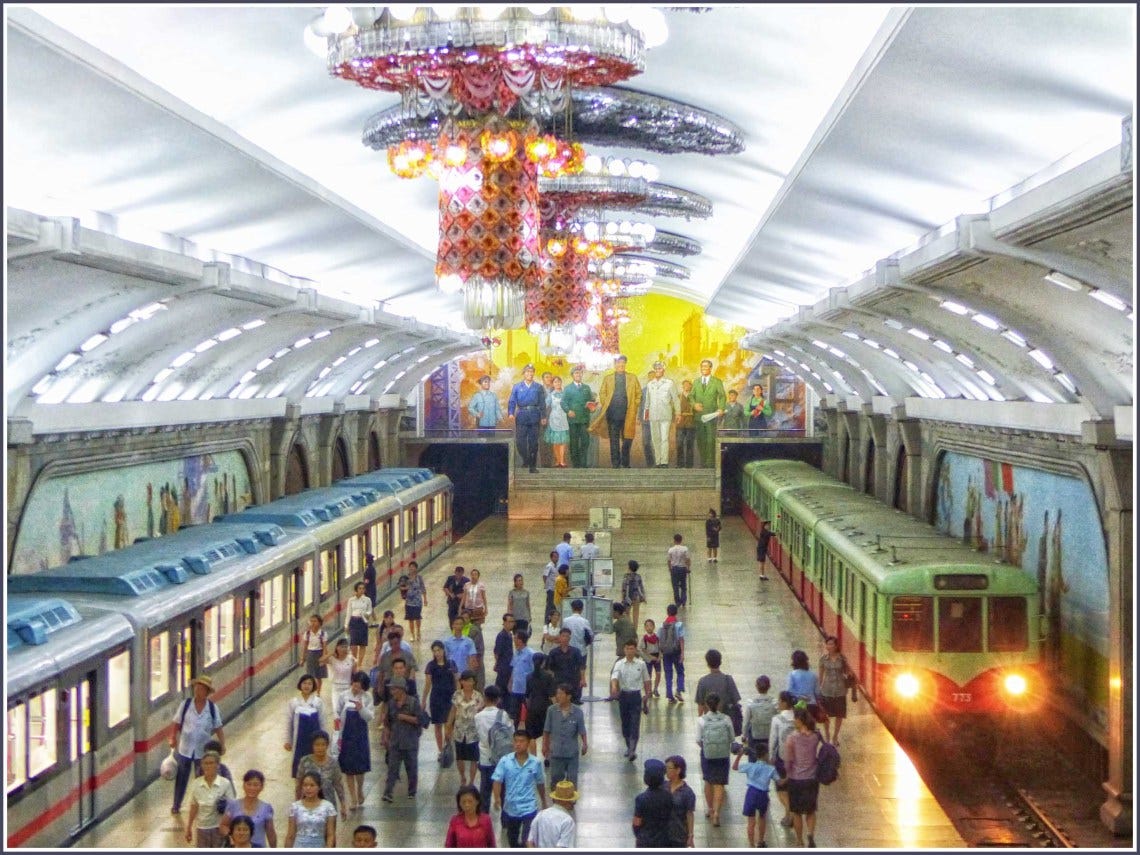
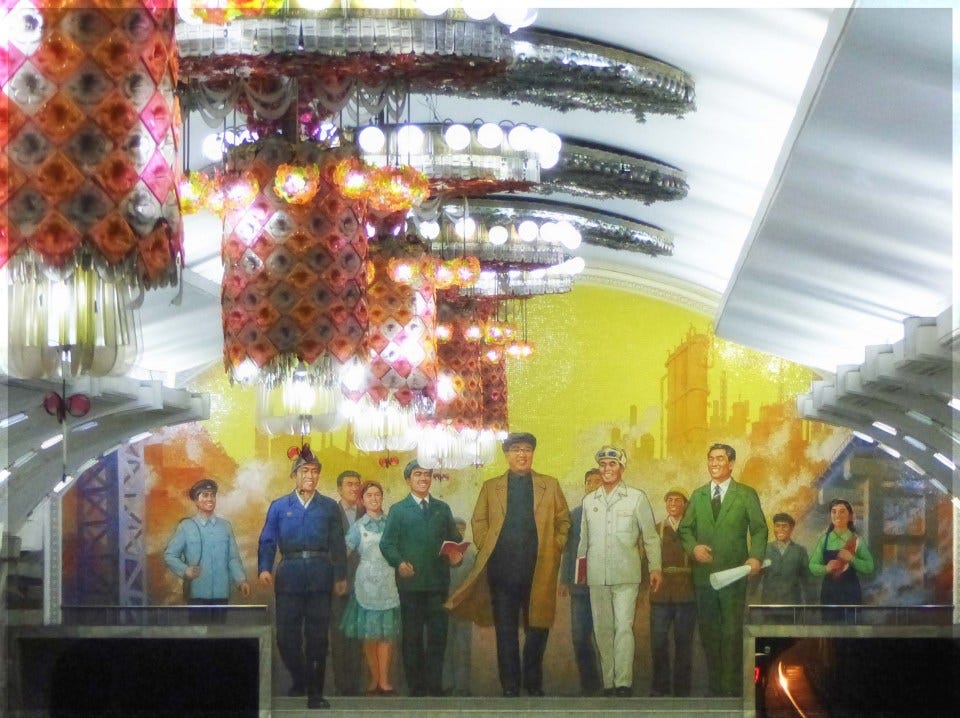
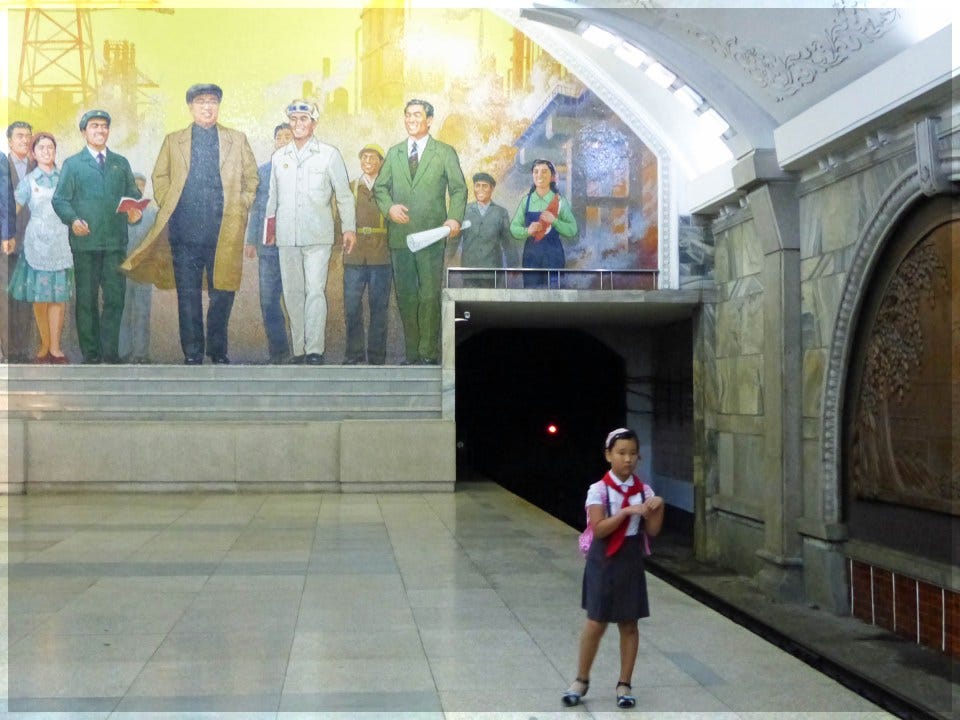
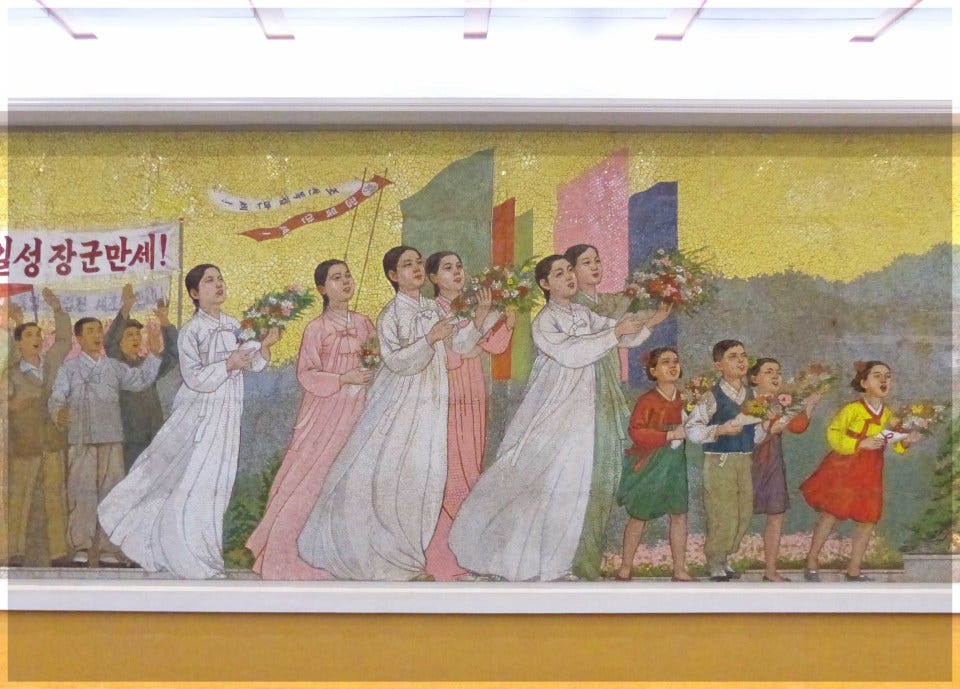
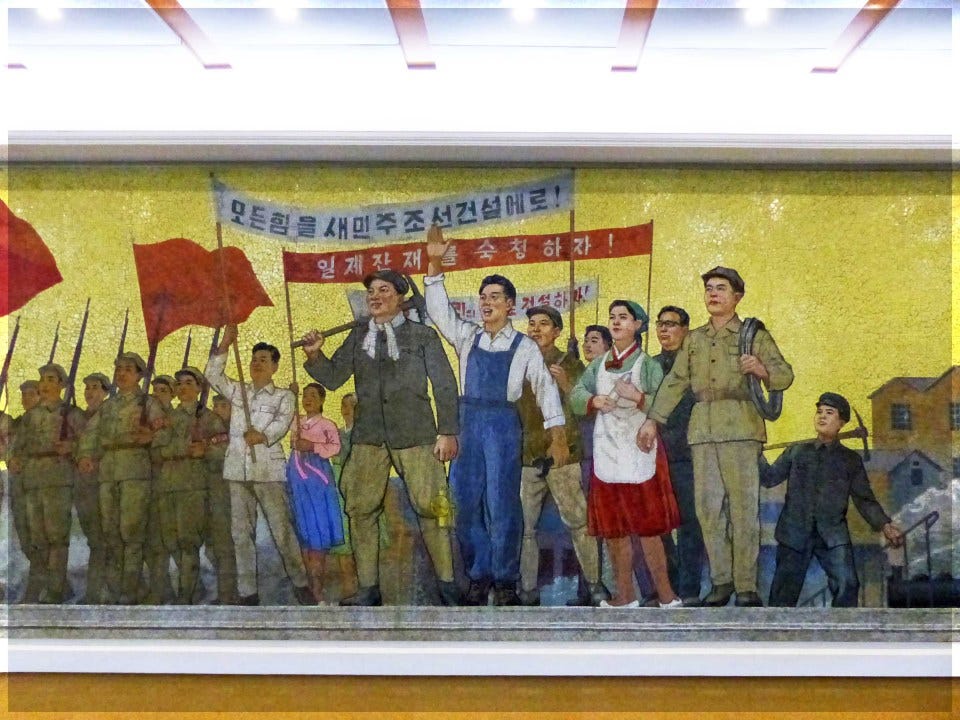





Share this post